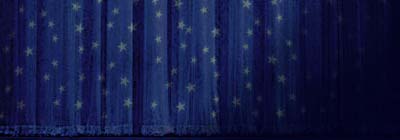ELIO VILLAFRANCA & THE JASS SYNCOPATORS
Flower by the Dry River (DirectGrace Recordings 2012)
Elio Villafranca & The Jass Syncopators is the artistic and cultural synthesis of his vision of Duke Ellington’s Colored Syncopators musical approach. It is applied to contemporary jazz 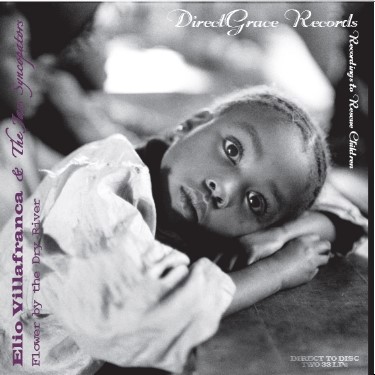 idioms, and Villafranca’s Latin
heritage features strongly. The name came after
he read about Ellington’s orchestra and the
description given by the reviews of the day that
did not quite understand his highly syncopated
approach to the music. Elio, born in Cuba, where
syncopation is one of the most familiar and important elements in Afro Cuban, popular and
classical music, understood at once!
Syncopation was what the earliest Cuban classical and first nationalists composers such as Ignacio Cervantes Kawanagh (Havana, 31 July 1847 – Havana, 29 April 1905) and Manuel Saumell Robredo (19 April 1818 – 14 August 1870) based their earliest Danzas and Countradanzas on to differentiate themselves from other European classical composers. In this project Villafranca challenges the boundaries of Jazz by fusing it with the syncopated nature idioms, and Villafranca’s Latin
heritage features strongly. The name came after
he read about Ellington’s orchestra and the
description given by the reviews of the day that
did not quite understand his highly syncopated
approach to the music. Elio, born in Cuba, where
syncopation is one of the most familiar and important elements in Afro Cuban, popular and
classical music, understood at once!
Syncopation was what the earliest Cuban classical and first nationalists composers such as Ignacio Cervantes Kawanagh (Havana, 31 July 1847 – Havana, 29 April 1905) and Manuel Saumell Robredo (19 April 1818 – 14 August 1870) based their earliest Danzas and Countradanzas on to differentiate themselves from other European classical composers. In this project Villafranca challenges the boundaries of Jazz by fusing it with the syncopated nature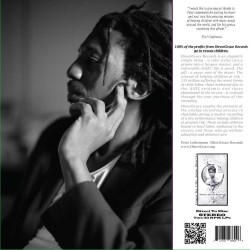 of Afro-Caribbean music from Puerto Rico, Haiti, and Congolese rhythms of Makuta and tambor Yuka, as it is called in his hometown of Pinar del Rio, Cuba. of Afro-Caribbean music from Puerto Rico, Haiti, and Congolese rhythms of Makuta and tambor Yuka, as it is called in his hometown of Pinar del Rio, Cuba.
In this band, Elio Villafranca & The Jass Syncopators strive to create a multi-layered musical dialogue where intellectual understanding of the music is secondary to its full rich experience. The music serves as a platform where each of the musicians can express their artistry through their respective musical backgrounds, yet assert themselves within a body of movement and syncopations.
According to Villafranca, Flower by the Dry River, unlike other recordings he has done, started with the visual image, not with music. The image was of a bright red flower 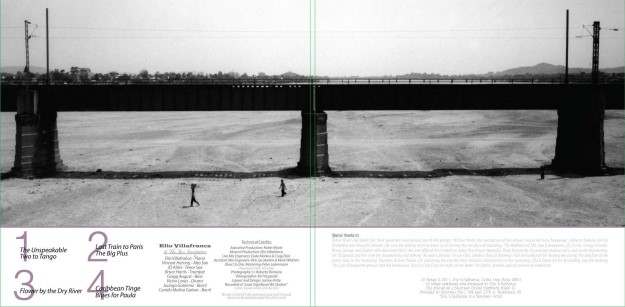 blooming by the bank of a very dry river. That image, inspired him to not only write the piece that gives title to this album, but also to use the proceeds from this recording to help children of the world subject to abuse, starvation, and poverty. blooming by the bank of a very dry river. That image, inspired him to not only write the piece that gives title to this album, but also to use the proceeds from this recording to help children of the world subject to abuse, starvation, and poverty.
click here to purchase DirectGrace recordings
visit: http://www.eliovillafranca.net/ | download this page as printable PDF
Tune Descriptions
Disk 1, side 1, starts with The Unspeakable. This tune uses a rhythm called Yubá as its rhythmic foundation, while the chord progression in the solo section is reminiscent of John Coltrane’s chord changes in his masterpiece Giant Steps. The rhythm of Yubá is a form an afro-Puerto Rican music known as Bomba, originating in the region of Mayagüé. This tune features Bruce Harris on trumpet, JD Allen on tenor sax, Elio Villafranca on piano, Juango Gutierrez, and Camilo Molina on barriles. The barriles are a type of drums with a similar shape, but wider than the conga, used to play the rhythm of Bomba. click to hear sample (90 sec. 128k bitrate MP3)
This tune is followed by Two to Tango. Two to Tango is the first tango-influenced piece written by Villafranca. The slow Milonga style of Argentinean tango is used during the solo section featuring JD Allen on tenor sax, Gregg August on bass, and Villafranca on piano.
Disk 1, side 2 starts with Last Train to Paris, a ballad that was written after Elio’s first trip with his wife Aoife to this wonderful city, portraying his impressions of the old streets of Paris. This tune features Vincent Herring on alto sax, and Elio Villafranca on piano.
Breaking the nostalgic mood of Paris, The Big Plus brings a more celebratory feeling, almost like been at a southern church on a Sunday afternoon. This tune evokes joy and hope and features Vincent Herring on alto sax, Bruce Harris on trumpet, Elio Villafranca on piano, and Victor Lewis on drums.
The entire first side of Disk 2 is a composition that gives title to the double album Flower by the Dry River. In this tune, Elio uses a slow rhythm played in the barriles called Belén, also a derivation of Afro Puerto Rican music. The piece starts ad libitum. As the tune develops, the steady pulse of the Belén rhythm serves as the foundation for the free improvisational approach by the members of the group.
The last side starts with Caribbean Tinge, a minor blues that Villafranca wrote specifically for this ensemble configuration. In the bridges Villafranca uses a rhythm called Sicá, a form of Afro Puerto Rican music known as Bomba originating in the region of Santurce, Puerto Rico. Originally, this tune was written to a rhythm called Makuta from the Congolese tradition in Cuba. Realizing that there aren’t percussionists familiar with this form of Congolese music, Villafranca experimented with the rhythm of Sicá which has similar African roots as Makuta, making it more familiar for the percussionists. This tune is the only one that features the 3 horns, JD Allen on tenor sax, Vincent Herring on alto sax, and Bruce Harris on trumpet.
This side ends with Blues for Paula, a tune Villafranca wrote for his mother. He composed this tune on the way to his second recording day of Flower by the Dry River. This blues, unlike the rest of the tunes in the album, features two saxophones, Vincent Herring on Alto, JD Allen on tenor, and Elio Villafranca on piano.
click here to purchase DirectGrace recordings
DIRECTGRACE RECORDS: Recordings to Rescue Children
The Mission:
DirectGrace Records is a unique music recording company that weds a passion for high-end vinyl recording to charitable giving. Dedicated to the world's most at-risk children, all profits from the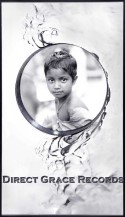 sale of each unique, high-definition record goes to organizations helping children in extreme poverty. sale of each unique, high-definition record goes to organizations helping children in extreme poverty.
The DirectGrace Records Project:
The DirectGrace Records Project has been created as a self-funding perpetual operation to attack poverty and abuse of children. DirectGrace produces premium, high-fidelity recordings for the audiophile community and commits its profits to charities that help endangered children.
The John Herrick Jackson Memorial Foundation is the fiscal sponsor of DirectGrace Records, receiving its profits and donations and distributing them to children’s charities.
|
